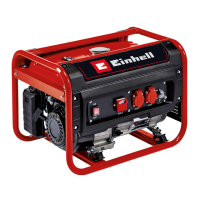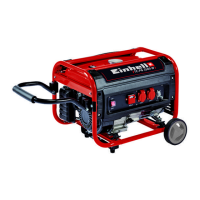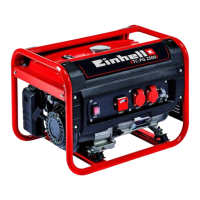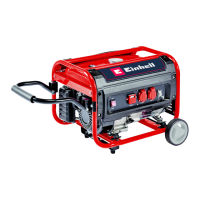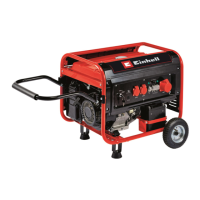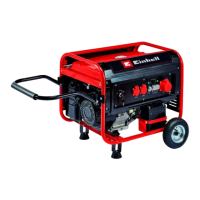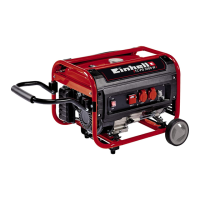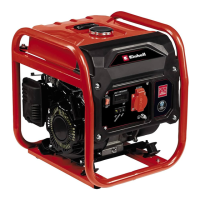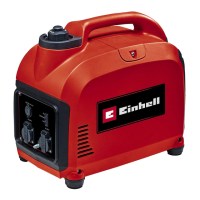6.1 Starting the engine
• Open the petrol cock (8) by turning it down
• Move the ON/OFF switch (5) to position „ON”
with the key.
• Move the choke lever (4) to position .
• Start the engine with the reversing starter (7)
by pulling the handle forcefully. If the engine
does not start, pull the handle again.
• Push the choke lever (4) back again after the
engine has started.
Warning!
When starting with the reserve starter, the motor
may recoil suddenly as it starts up, resulting in
hand injuries. Wear protective gloves when
starting the equipment.
6.2 Connecting consumers to the generator •
Connect the appliance you want to use to the 230
V~ socket.
Notice! This socket may be loaded continuously
(S1) with 680W and temporarily for a maximum of
1 minutes with 800W. The generator is suitable
for 230 V~ a.c. appliances. • Do not connect the
generator to the household network as this may
result in damage to the generator itself or to other
electrical appliances in your home.
Note: Some electrical appliances (power jigsaws,
drills, etc.) may have a higher level of power
consumption when used in diffi cult conditions.
6.3 Switching off the engine
• Before you switch off the generator, allow it
to run briefly with no consumers so that it
can
„cool down”
• Move the ON/OFF switch (5) to position
„OFF” with the key.
• Close the petrol cock Notice! The generator
is equipped with an overload cut-out.
This shuts down the socket (6). You can
reactivate the socket (6) by pressing the overload
cut-out (3).
Notice! If this happens, reduce the electric power
you are taking from the generator or remove any
defective connected appliances.
7. Cleaning, maintenance, storage
and ordering of spare parts
Switch off the motor and pull the spark plug boot
from the spark plug before doing any cleaning
and maintenance work on the equipment.
Notice! Switch off the machine immediately
and contact your service station: • In the event
of unusual vibrations or noise
• If the engine appears to be overloaded or
misfires 7.1 Cleaning
• Keep all safety devices, air vents and the
motor housing free of dirt and dust as far as
possible. Wipe the equipment with a clean
cloth or blow it with compressed air at low
pressure.
• We recommend that you clean the device
immediately each time you have finished
using it.
• Clean the equipment regularly with a moist
cloth and some soft soap. Do not use
cleaning agents or solvents; these could
attack the plastic parts of the equipment.
Ensure that no water can seep into the
device.
7.2. Air fi lter (Fig. 5/6)
• The air filter should be cleaned after every
30 hours of operation.
• Remove the air filter cover (Fig. 5).
• Remove the filter element (Fig. 6).
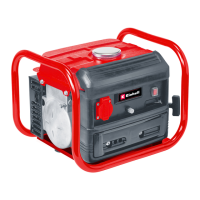
